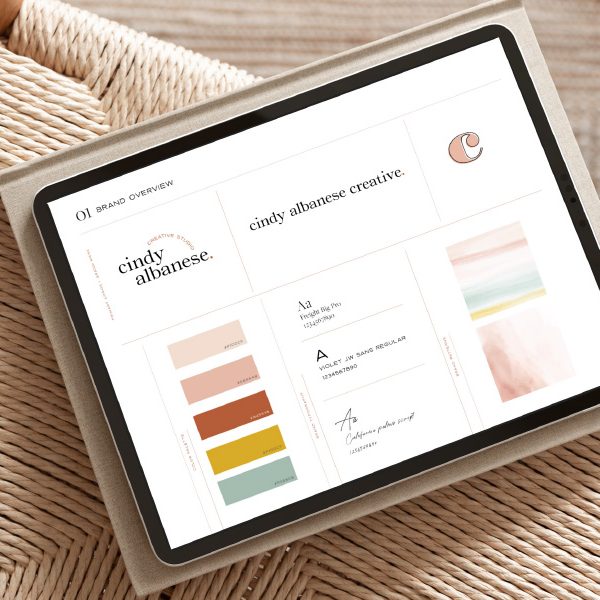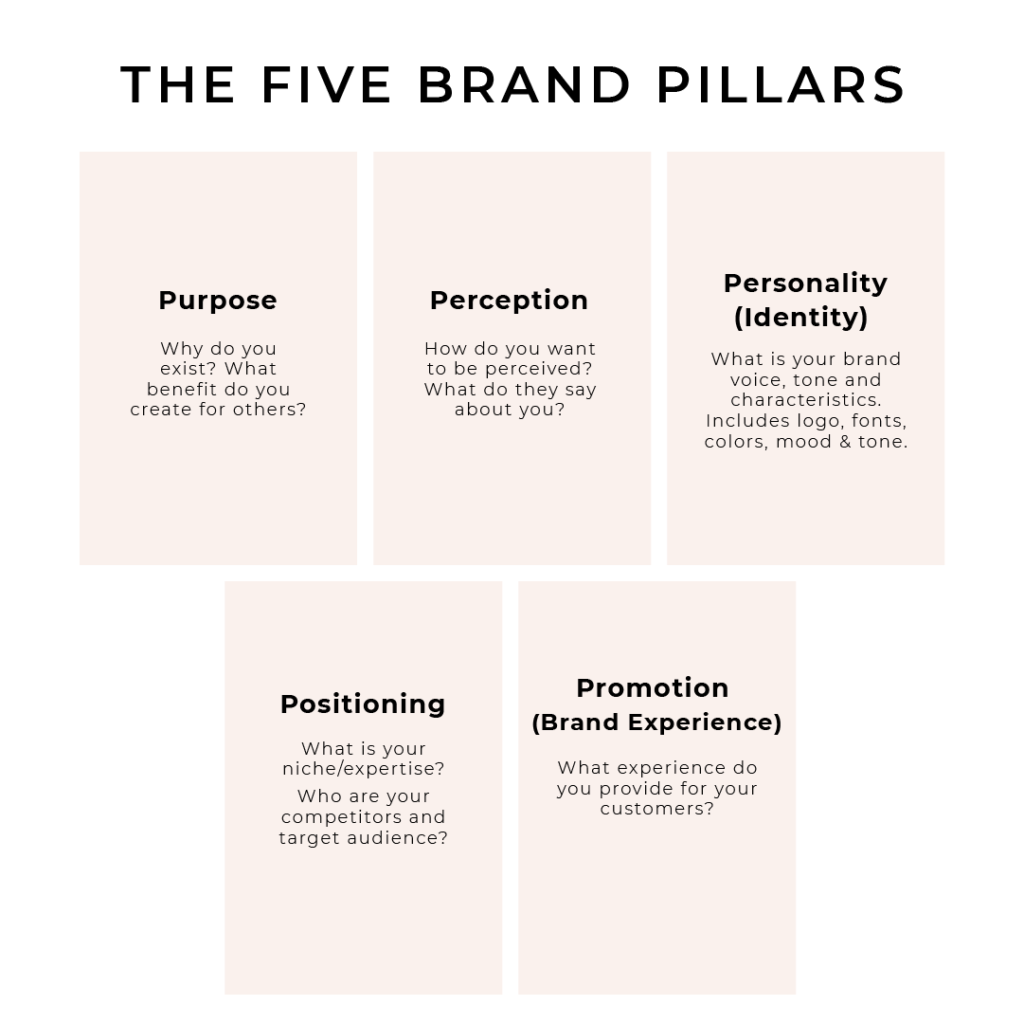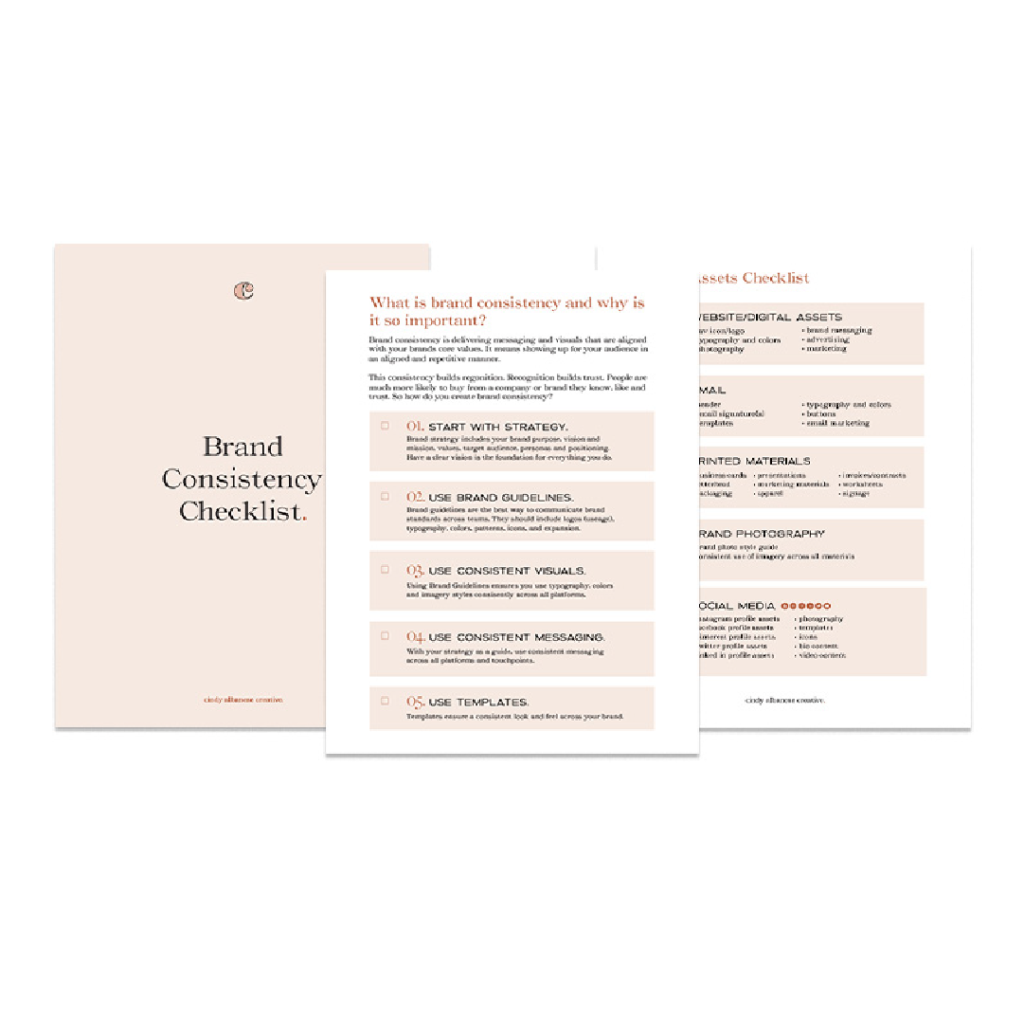Boost Your Brand's Potential: Master the Basics of Branding

What is Branding?
Branding is everything that embodies your business. The core values your business stands for. It is an expression of everything that you represent.
Oxford Languages defines branding as the promotion of a particular product or company by means of advertising and distinctive design. “the process of branding should be considered in global terms” distinctive wording or design used to identify a particular brand.
“the first thing you’ll notice is the cool blue branding.”
Branding is an experience of making meaning of your business. It includes storytelling, communications and messaging, customer experience and interactions. These are part of your brand personality and values.
Your brand personality and values come together to create your brand pillars.


The five brand pillars are:
Purpose
Why do you exist? What benefit do you create for others?
Perception
How do you want to be perceived? What do they say about you?
Personality/Identity
What is your brand voice, tone and characteristics? Includes logo, font colors, mood and tone.
Positioning
What is your niche/expertise? Who are your competitors and target audience?
Promotion (Brand Experience)
What experience do you provide for your customers?
Branding and identity design is taking all of these foundational elements and putting them together to create a cohesive image.
Each touchpoint your customer has with your brand is an opportunity to strengthen your brand and communicate your purpose.
Benefits of Branding
Recognition – Good branding makes a memorable first impression.The more familiar your brand is, the more likely your clients are to choose it over others.
Loyalty– A good brand experience creates loyal customers. Building an emotional connection with your customers keeps them coming back.
Trust and Credibility – Customers want to buy from brands they recognize and trust. Building this trust starts with consistency.
Perceived Value – Professional designs create respect, trust and better engagement. A strong brand sets you apart from the competition.
Relationships – Brand consistency builds better relationships with your customers. When clients relate to your values, they want to do business with you.
Building Your Brand
Before you think about the logo, it’s important to dig deeper. To explore the purpose, the experience and the story you want your brand to tell. How do you want to communicate this to your audience? Does every touchpoint they have reinforce this message?
Building your brand starts with a strong foundation. Brand strategy is the foundation for your brand. It includes purpose, vision, mission, values, audience, positioning, personality and voice.
Brand strategy includes:
Purpose – Why do you exist? What benefits do you create for others? What is your why?
Vision – What future do you want to help create? What is the long term goal?
Mission – What is your daily commitment to achieve your long term goal? This should capture your brand purpose, audience and objectives.
Values – A set of beliefs and principles that your brand cares about.
Audience – Who does your brand serve? Think about your ideal client. Consider their age, gender, relationship status, job title, location, salary and budget.
Positioning – How are you perceived in the minds of your customer? What is the brand category? The value offered and how you are different from the competition.
Personality – What is the personality of your brand? Are you sophisticated, playful, bold, modern, personable, professional, accessible or minimal.
Brand Voice – What do you want to communicate with your branding? What people interact with your brand, how do you want them to feel?
Strategy is often overlooked because it requires more time and research. Starting with a good foundation is vital for clear direction and focus when building your brand.
Keep in mind, depending on the stage of business you are in, you might still be figuring these things out. But having clarity and focus in the beginning will help as you grow your business.


Branding in Use
A strong brand increases confidence in your business. Your brand should be rooted in strategy, developed with your ideal customer in mind, and designed to tell your brand story.
Are you tired of trying to do it all yourself? Struggling to make a brand impact? In need of scroll stopping content?

Hi, I'm Cindy. I'm a branding expert who is passionate about health and wellness.
I’m here to help you build a brand you delight in, save you time and add more joy to your business.

